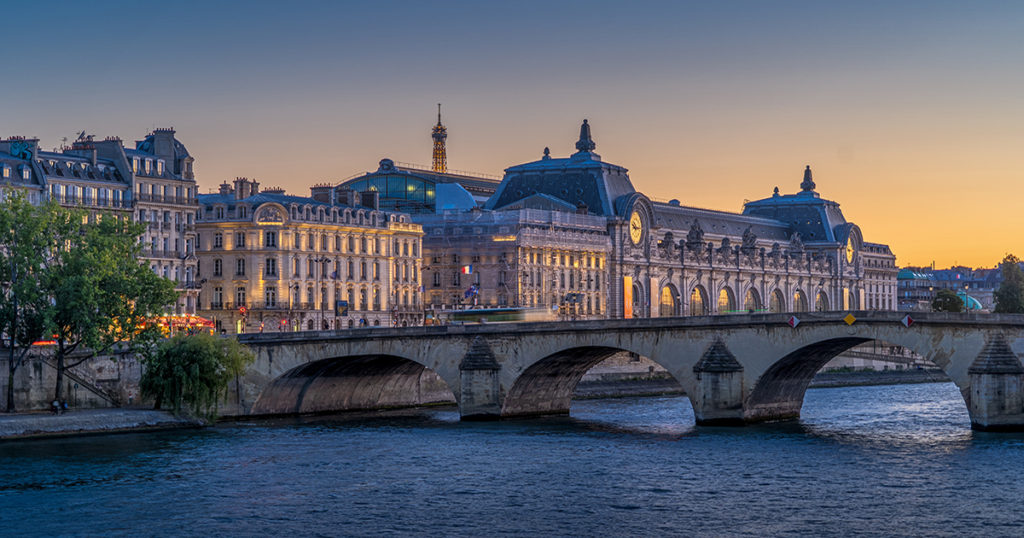Introduction:
Located on the picturesque bank of the Seine River, the Musee d’Orsay stands as a testament to the rich artistic heritage of Paris. Housed in a former railway station, this magnificent museum has become a treasure trove of monumental artworks, revealing the city’s deep connection with the world of fine arts. In this article, we will explore the captivating history, remarkable collection, and the significant role the Musee d’Orsay has played in shaping the artistic landscape of Paris.
The History Behind the Masterpiece:
The Musee d’Orsay wasn’t always the world-renowned museum we know today. Initially, it served as a railway station, the Gare d’Orsay, which operated from 1900 to 1939. Following a period of abandonment, the French government decided to repurpose the building as a museum dedicated to 19th-century art. After an extensive renovation and restoration project, the museum finally opened its doors in 1986. Its conversion introduced a bold fusion of architectural heritage and contemporary vision, making it an artistic masterpiece in itself.
Unveiling Masterpieces from the 19th and Early 20th Century:
The Musee d’Orsay boasts an extraordinary collection of artworks primarily from the 19th and early 20th centuries. Visitors are captivated by artworks representing the Impressionist, Post-Impressionist, and Art Nouveau movements. The museum showcases masterpieces by renowned artists like Monet, Renoir, Van Gogh, Degas, Cezanne, and many others. Stroll through the museum’s vast galleries and let yourself be transported to a time when art underwent groundbreaking transformations, giving birth to new possibilities.
A Symbol of Parisian Cultural Renaissance:
The Musee d’Orsay not only holds artistic significance but also played a crucial role in the cultural renaissance of Paris. It bridges the gap between the Louvre and the Centre Pompidou, forming the golden triangle of art in the city. With its focus on 19th-century art, the museum filled a void in Parisian culture, providing visitors with a deeper understanding of the evolution and contributions of art during that time. Its opening marked a turning point for the city, firmly establishing Paris as a beacon of artistic brilliance.
Surrender to the Musee d’Orsay Experience:
Visiting the Musee d’Orsay is an immersive experience that enchants art lovers and cultural enthusiasts alike. The breathtaking architecture of the former railway station, the natural light filtering through the glass roof, and the carefully curated collection create an ambiance that transports visitors to an era of artistic revolution. You’ll find not only paintings but also sculptures, decorative arts, and even photography, making it a comprehensive overview of the artistic expressions of the time.
Here is a list of some of the most iconic works you can find at the Musée d’Orsay:
«Olympia» by Édouard Manet: This controversial painting caused quite a stir when it was first exhibited in 1865. The reclining nude figure depicted in the painting challenged traditional ideals of beauty and sparked heated debates.
«Starry Night Over the Rhône» by Vincent van Gogh: This stunning night scene captures the beauty of the starry sky reflected in the river Rhône. Van Gogh’s dynamic brushstrokes and vibrant colors make it one of his most recognizable and beloved works.
«The Dance at Le Moulin de la Galette» by Pierre-Auguste Renoir: This lively and joyful painting depicts a group of people enjoying a festive dance at an outdoor cafe in Montmartre. Renoir’s skillful depiction of light and movement brings the scene to life.
«Whistler’s Mother» by James McNeill Whistler: Also known as «Arrangement in Grey and Black No. 1,» this iconic portrait of Whistler’s mother is a study in simplicity and elegance. The stoic expression of the subject has become an enduring image in popular culture.
«The Birth of Venus» by Alexandre Cabanel: Inspired by Botticelli’s famous painting, this sensual masterpiece portrays the goddess Venus emerging from the sea. Cabanel’s meticulous attention to detail and idealized beauty make this work a must-see.
«The Luncheon on the Grass» by Édouard Manet: Another controversial piece by Manet, this painting depicts a nude woman casually having a picnic with two fully clothed men in a park. Its unconventional composition and subject matter challenged societal norms at the time.
These are just a few examples of the remarkable artworks on display at the Musée d’Orsay. Each piece represents a significant milestone in art history and offers visitors a unique glimpse into the creativity and innovation of the artists of their time.
Conclusion:
The Musee d’Orsay is a jewel in Paris’s cultural crown, a living testament to the city’s artistic soul. Its history, magnificent collection, and profound impact on the cultural landscape make it an essential destination for art enthusiasts from around the world. Immerse yourself in the masterpieces that inhabit these hallowed halls, and you’ll come away with a deeper appreciation for the artistic achievements of the 19th and early 20th centuries, forever grateful for the Musee d’Orsay’s role in preserving and celebrating Paris’s artistic heritage.

